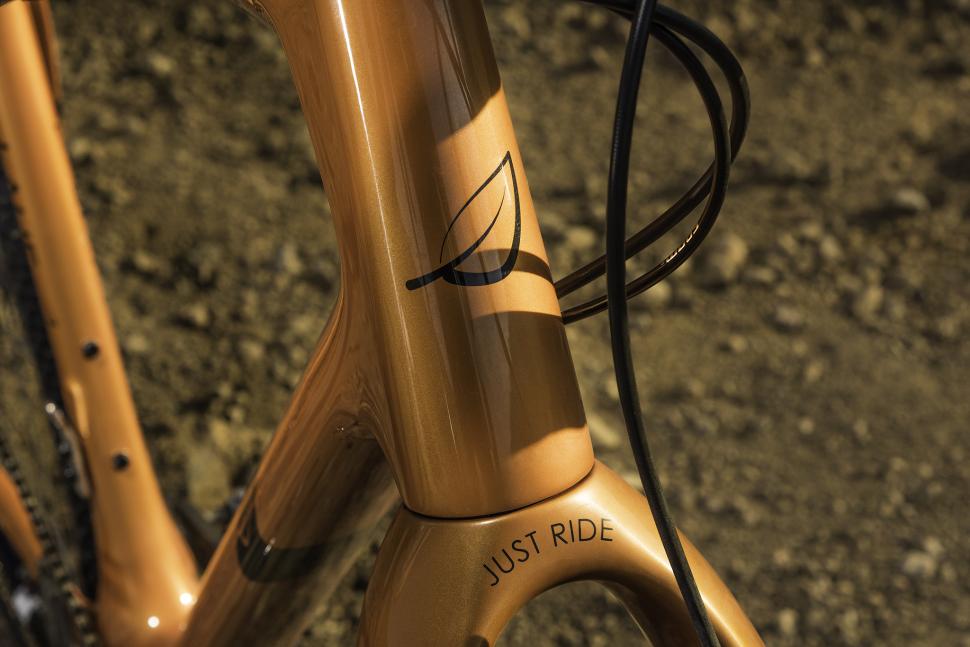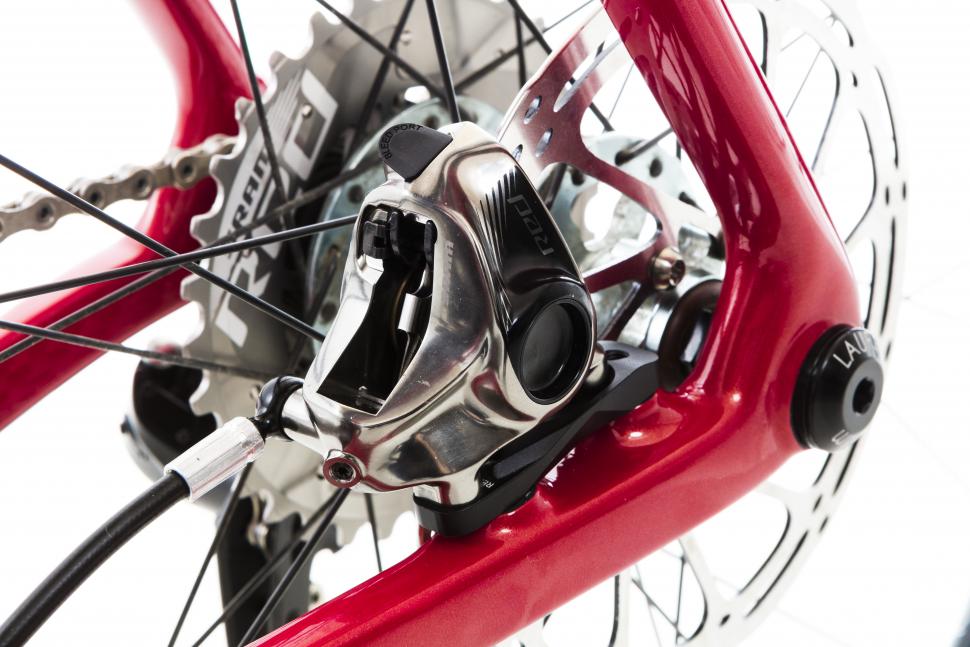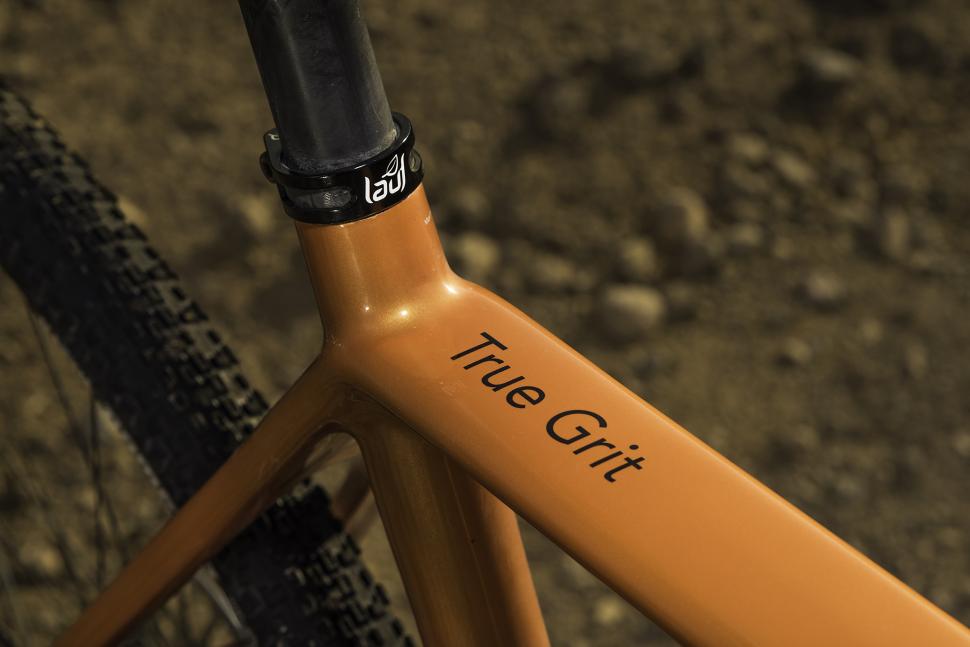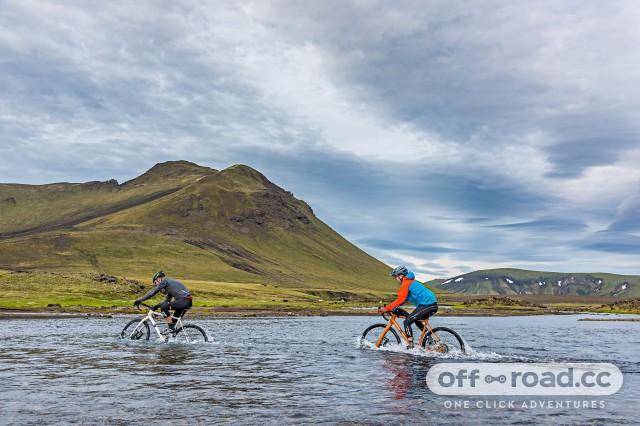- News
- Reviews
- Bikes
- Components
- Bar tape & grips
- Bottom brackets
- Brake & gear cables
- Brake & STI levers
- Brake pads & spares
- Brakes
- Cassettes & freewheels
- Chains
- Chainsets & chainrings
- Derailleurs - front
- Derailleurs - rear
- Forks
- Gear levers & shifters
- Groupsets
- Handlebars & extensions
- Headsets
- Hubs
- Inner tubes
- Pedals
- Quick releases & skewers
- Saddles
- Seatposts
- Stems
- Wheels
- Tyres
- Tubeless valves
- Accessories
- Accessories - misc
- Computer mounts
- Bags
- Bar ends
- Bike bags & cases
- Bottle cages
- Bottles
- Cameras
- Car racks
- Child seats
- Computers
- Glasses
- GPS units
- Helmets
- Lights - front
- Lights - rear
- Lights - sets
- Locks
- Mirrors
- Mudguards
- Racks
- Pumps & CO2 inflators
- Puncture kits
- Reflectives
- Smart watches
- Stands and racks
- Trailers
- Clothing
- Health, fitness and nutrition
- Tools and workshop
- Miscellaneous
- Buyers Guides
- Features
- Forum
- Recommends
- Podcast
TECH NEWS
First Ride: Lauf's new True Grit gravel race bike and refined fork
Lauf might be best known for their rather quirky leaf sprung forks, but they're determined to capitalise on their success, with an all-new gravel race bike called the True Grit and an updated Grit SL fork to match. I headed to Iceland to take it for a spin on its home turf.
Originally starting out with a leaf sprung mountain bike fork inspired by founder Benedikt Skúlason's background in making prosthetic limbs, the company has really found its metier in recent years with the rise of gravel riding and racing. It's there that the low weight and minimally altered axle-to-crown length of their short travel fork design start to outweigh the lack of damping inherent in the design and it's become a common sight at many gravel race events, despite a fairly large price tag.
It's this growing popularity that was the catalyst for creating a complete gravel racing bike, as they struggled to try and wrap their heads around the demands put on them when trying to make a fork that'd work with as many other manufacturer's bikes as possible. The easy solution was to make the fork exactly the way they wanted to make it and ensure it fitted the bike by making that as well.
Okay, that and a bit of liquid inspiration, as Chief Design Officer Gudberg Björnsson explains: "Three or four times a year we have a planning meeting where we just drink loads of beer and get the ideas out, this is where we came up with the idea [for the bike]. Five days later we were designing it."
The bike is designed specifically as a gravel race bike for long distance events, though that's not to say it can't turn its hand to other things. As you'd expect from a company that only works in composites, there will only be a carbon fibre frame. The geometry is decidedly new school, with a long top tube, slack 70.5º head angle with low stack and short-ish stem. There will be three sizes ranging from small to large, but each size gets a 'short' and 'long' version with a different length stem to tune the fit. Full geometry is below.
There are flattened stays at the rear, but Benedikt was keen the puncture the marketing around claims of 'X% improved compliance' that often get bandied around by manufacturers of bikes with spindly stays. After all, a gaining a fraction of a millimetre more movement still only results in a couple of fractions of millimetre movement, something they say is unlikely to be noticed in real world use, even if it is a headline grabbing percentage change. They even simulated making their seatstays from the same flexible fibreglass their fork springs are made from and it simply didn't make a difference.
- 18 of the best 2017 gravel & adventure bikes
The wheels are 700c with clearance for up to 45mm tyres. Lauf haven't designed the bike with 650b wheels in mind and as such they haven't tested it with them either - they simply don't see the point and don't want to compromise the bike because of it. As befits a modern gravel bike, there are through axles at each end, with a 12x142mm axle at the rear.
The rear derailleur cable and brake hoses are internally routed with guides for hassle free fitting. Pleasingly, the bottom bracket is a proper threaded BSA item rather than Press Fit, so lifespan should be respectable and fitting not an issue. You also get three bottle cage mounts on the frame, plus another mount for a triathlon-style bento box just behind the headtube.
I measured the weight of a large frame as 1,100g, which tallies well with their claims and is impressive given that the bike is tested to mountain bike standards. That said, there is a rider weight limit of 110kg.
Though most of the complete bikes - there are three in the range - are specced with a single ring drivetrain, there is still a front derailleur mount that's replaced by a bottle opener when not needed. Lauf call this their 'Beer or Gear' system, which tells you a fair bit about their company culture. There's no cable routing for a front derailleur, however. The only bike in the range that gets a double setup is specced with SRAM's wireless eTap system and it also reduces rear tyre clearance down to 40mm and needs a 5mm longer crank axle.
Up front, there's a revised version of the Grit gravel fork called the SL. It gets the same 25mm of travel via composite leaf springs but it's a very different animal. As the name suggests, it's lighter than before, dropping a claimed 50g as it now has a 1.5" bearing race moulded into the fork crown - the benefit of not having to pander to another brand's desires. The overall shape of the fork has also been tweaked and it's much easier on the eye because of it, with a more flowing and less angular shape.
That's not just an aesthetic choice; it's allowed them to lower the peak stresses on the fork, while the shorter leaf springs have a lower risk of delamination under extreme use. It all results in a fork that's stiffer front to rear too. Lauf is also sticking with a mountain bike style 15x100mm axle. When asked why they'd gone for 15mm over 12mm, their answer was simply "why use 15mm over 12mm?".
There's only one stiffness of leaf spring on the fork. Lauf does offer different stiffnesses of springs on their mountain bike forks, but they found riders consistently chose the same rate. They've found that the combined weight of bike and rider between heaviest and lightest is only a small percentage difference, making it less crucial. They also found that lighter riders tend to prefer a stiffer spring as a rule, making it easier cater for as many weights as possible.
Lauf has also created their own carbon fibre handlebar. It's a compact bar with a slight 4º flare and 10mm longer sweep at the bottom of the bar. It's got a very sharp corner at the drop to allow you to use the full width when riding on the tops. It's still a work in progress so hasn't been specced on the bikes at the moment.
The True Grit range
There are three complete bikes in the range, plus a frame and fork only. The most affordable two models are the single ring Weekend Warrior and Race Edition spec bikes, while the most expensive bike in the range is the eTap equipped Race Wireless. Lauf will be selling the bikes direct or through specially chosen dealers and they have a novel pricing structure. If you want the bike as soon as it's available, then it's a few hundred US dollars more than if you're willing the wait the 12 week lead time.
If you want a non-standard 'premium' colour, then again you'll have to pay a bit more and also wait the 12 week lead time. The standard frame colours are midnight blue or cream white, but you can choose the rather nice curry orange plus a load of other to-be-confirmed colours soon.
The True Grit starts shipping in November and orders will be taken from 10th of August. However, until the tiered pricing starts in November, all prices will be equivalent to the 12 week, non-premium colour price. As they're all priced in US dollars, they will fluctuate with the exchange rate slightly, so I've just left them as such, but they offer pretty keen value for a top-end carbon gravel bike.
Frame and fork
If you just want a frame and fork, then the price is $2,690 if you want it as soon as possible and $2,690 for the premium colour, which comes with a 12-week wait. You do get all the bits and pieces needed to make it work included, such as headset and through axles, plus seat collar and the bottle opener-cum-mech mount cover.
Lauf True Grit - Weekend Warrior
Buy now: $3,690
Wait 12 weeks: $3,290
Premium colour: $3,690
This bike comes with a SRAM Rival 1 drivetrain and hydraulic brakes, with a 11-42t 11spd cassette. The American Classic AM28 wheelset is tubeless ready and comes with 40c Maxxis Ramblers with 120tpi EXO reinforced casing. The bar is a carbon Easton EC70 with an aluminium EA70 stem, while the saddle is a WTB Volt Pro.
Lauf True Grit - Race Edition
Buy now: $4,990
Wait 12 weeks: $4,490
Premium colour: $4,890
This bike comes with a SRAM Force 1 drivetrain and hydraulic brakes, with a 10-42t 11spd cassette. The crankset is an Easton EC90 SL with a 42t ring. The American Classic AM28 wheelset is tubeless ready with an XD driver body and comes with same 40c Maxxis Ramblers with 120tpi EXO reinforced casing. Again, the bar is a carbon Easton EC70 with an aluminium EA70 stem, while the saddle is a WTB Volt Pro.
Lauf True Grit - Race Edition Wireless - 2x11
Buy now: $6,390
Wait 12 weeks: $5,790
Premium colour: $6,190
This bike comes with a SRAM Red eTap drivetrain and hydraulic brakes, with an 11-32t 11spd cassette. The crankset is an Easton EC90 SL with 50/34T rings. The American Classic Race wheelset is tubeless ready comes with same 40c Maxxis Ramblers with 120tpi EXO reinforced casing. Again, the bar is a carbon Easton EC70 with an aluminium EA70 stem, while the saddle is a WTB Volt Pro.
Riding impressions
I spent a rather action packed two days riding the Race Edition of the True Grit. I'll save the full story of what was quite an epic trip for a separate feature, but safe to say we got the ful experience of Icelandic weather, from sunny days to 40-50kph headwinds and torrential rain that made the regular river crossings something to content with.
The riding in Iceland really makes you understand where Lauf is coming from, their fork in particular. There is mile after mile of gravel road, ranging from small pebbles that become washboard-rippled where cars travel over them to some rather more demanding rocky sections and challenging high-speed descents. The fork sucks up the high-frequency bumps that would otherwise become serious tiring on the endless roads and the lack of damping isn't an issue once you're wound up to speed. It's here that the stable geometry comes into its own as well. I was amazed at just how fast it was possible to descend on loose surfaces and still feel confident and planted. The wide American Classic rims and fat 40c tyres give a good cushion and really impressive grip, though like all gravel bikes braking is best done in a considered fashion - getting carried away with late braking almost landed me in trouble a few times, but the stable geometry let me get away with a lot.
It's not a heavy bike and it's a pleasant place to be when climbing, though I can't offer a truly considered opinion as I was on a bike that was far too large for me, despite adding an extra small stem to get my hands somewhere near where they needed to be. Over the course of many, many kilometres, I still felt as fresh as could be and climbs were dispatched in a punchy manner, rider fatigue excepted.
All in all, I'm hugely excited to get a bike to ride in the rather different condition of the UK, but as it stands, it's an impressive achievement for a first bike and it's remarkably good value when you consider what you're getting.
We've got a bike coming soon, so we'll give it a thorough going over on home turf when it lands...
This article first appeared on off-road.cc
Latest Comments
- lonpfrb 7 min 8 sec ago
Let's hope it doesn't mean there are 17 more...
- David9694 2 hours 1 min ago
cyclists should be made to have number plates - Interesting police video here of the range of illegal number plates - we'd got, as the caption says...
- rookybiker 3 hours 14 min ago
The trailer seems to connect to both ends of the rear axle. Can it do tight corners without dragging the tyre sideways?
- froze 3 hours 18 min ago
Motorists have always been unkind to cyclists, but distracted driving is adding to the problem....
- Destroyer666 4 hours 11 min ago
Have you owned Bont shoes? In my experience even the widest Lake shoes have had a bizarre form of narrowing way too much in the toe area. But the...
- froze 4 hours 39 min ago
Not sure if this is possible, but this news letter goes out all over the world, and some places like Decathlon does not send stuff to America, in...
- Hirsute 5 hours 23 min ago
I'm confused as to why you'd need bib shorts indoors.
- Oldfatgit 5 hours 52 min ago
I'm sure you were being sarcastic... however ... Lewis Hamilton lives in Monaco. Yet another car driver that doesn't pay any tax
- BikingBud 8 hours 5 min ago
Paddington Harrow Road crash leaves two seriously injured...








































Add new comment
5 comments
Nice bike and as said considering the cost of a Laugh fork the full bikes seem very well priced.
One question, the article mentions delamination of the leaf springs. While I appreciate that this is a possible rarity, are the springs replaceable? If so can they be changed by the owner or is it a shop/Laugh job?
Cheers
Are even 40mm tyres up to riding Iceland's fine, loose, volcanic dust? When touring in Iceland, I came off so many times on black volcanic sand, around Askja, that I often had to push. I was riding 26 x 1.75 and began to consider the advantages of a fat bike! (I still wouldn't want the alarming Q-factor and poor on-road performance:).
Nice to see a bike company finally admit that the "vertical compliance" myth is just that.
I've just tried going across to off-road.cc but my virus/security software is blocking the site as it seems to think that it's infected.
Just thought you guys should know (software I'm using is bitdefender).
Oh okay that bottle opener is pretty cool.